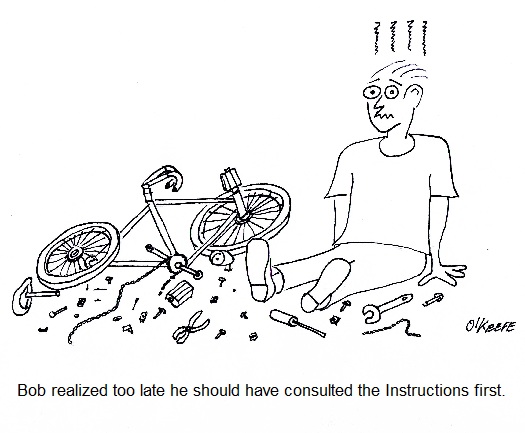| Last time we discovered that clearly written instructions are one of the desired end results of the Development stage of the systems engineering approach to medical device design. We learned that one of the objectives of these instructions is to make sure the devices are manufactured in a cost effective manner and with minimal defects during the Production stage.
Other instructions created during the Development stage are those addressing quality control inspections and testing instructions. The objective of the quality control department is to ensure that, during the Production stage, the end product has been assembled correctly, making use of the prescribed parts, and absent manufacturing defects. This end is achieved by virtue of the fact that the quality control department staff is usually not under the management of the engineering or manufacturing departments, therefore they are positioned to offer an impartial assessment of the production process. An undesirable side effect of quality control’s impartiality is that because they are not intimately involved in the design process, a great deal of collaboration must take place between them and design engineers to produce quality control instructions which meet objectives. To this end, many discussions must take place concerning subject matters as diverse as requirements for component dimensions, component material properties, and the proper assembly of parts. Next time we’ll continue our discussion on the Development stage by further examining how instructions are developed to ensure that the quality control department meets its objectives while performing inspections and tests during the Production stage. ___________________________________________ |
Posts Tagged ‘manufacturing instructions’
Systems Engineering In Medical Device Design – Instructions, Part 2
Monday, January 14th, 2013Systems Engineering In Medical Device Design – Instructions, Part I
Monday, January 7th, 2013| You know those instructional inserts that come in just about everything you buy? If you’re lucky they’re a one-pager, showing a simple illustration of how your purchase works. But sometimes they’re multiple pages long, even approaching the length of a short story. This is often the case when the item in question is complex and contains many parts.
If you’re like some people you try to avoid reading these instructions, preferring to forge ahead to the assembly/usage stage as quickly as possible, and you’ve probably had your fair share of times that this approach didn’t pan out. You were forced to re-do things and crack open the instruction manual anyway. If the instructions were written clearly, you may have eventually come to regard them as indispensable. Clearly written instructions are one of the desired end results of the Development stage of the systems engineering approach to medical device design that we’ve been discussing. These instructions flow naturally from the finalized detailed design which has been produced earlier in this stage. Instructions aid consumers in the assembly, usage, and maintenance of the device, making for a satisfied customer. Instructions also aid in the efficient and proper manufacture of devices. Without them assembly personnel wouldn’t work as efficiently, and the end result might not be a desirable one. It’s easy for parts to end up where they don’t belong, adjustments to be off, etc. Just think about the last “assemble it yourself at home” project you were involved in. The desired result is for instructions produced to be well defined and capable of instructing line assembly personnel in the actual construction of the medical device that takes place during the Production stage. Subjects such as parts identification, assembly procedures, and layout of assembly lines are discussed, all of which are needed to plan out the manufacturing process effectively. The objective is to manufacture the devices in a cost effective manner and with minimum probability of defects. Next week we’ll continue our discussion on instructions, focusing on those that are produced during the Development stage that serve the purpose of guiding quality control technicians during the Production stage. ___________________________________________ |





